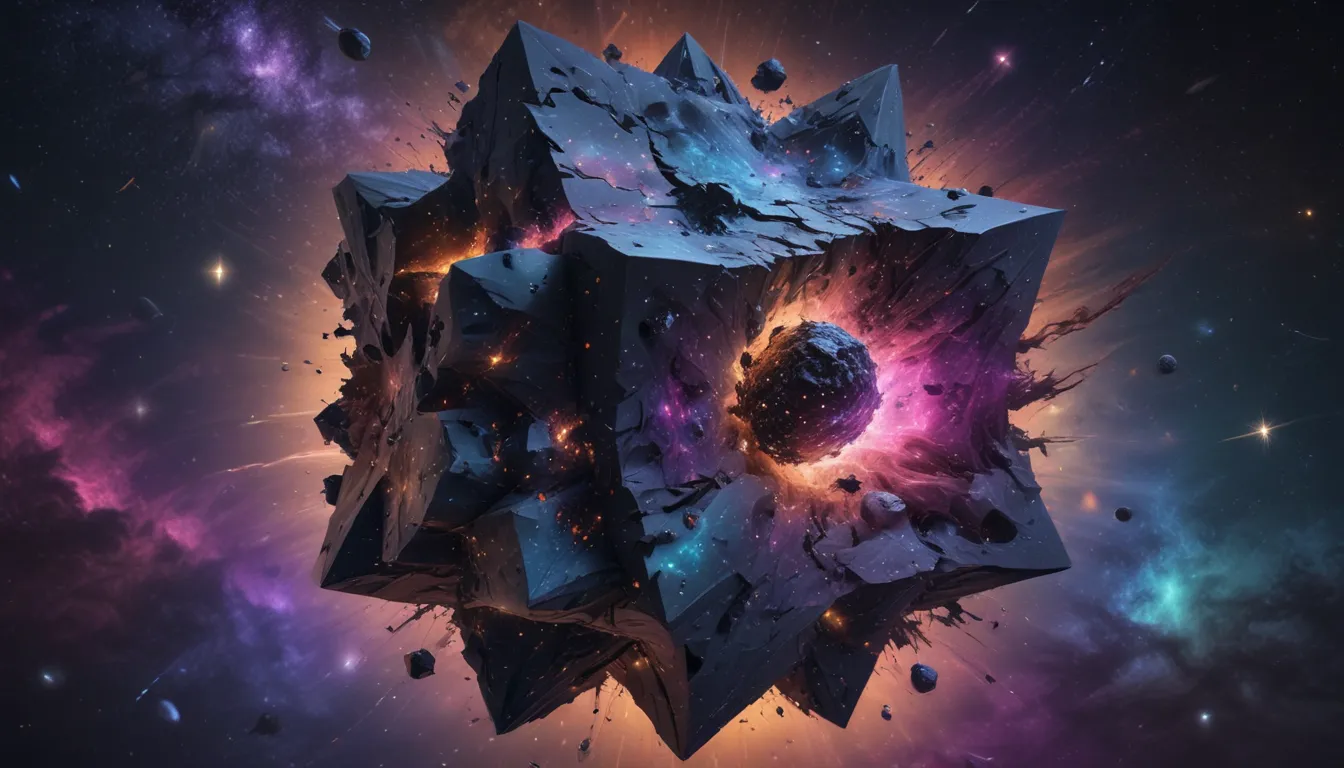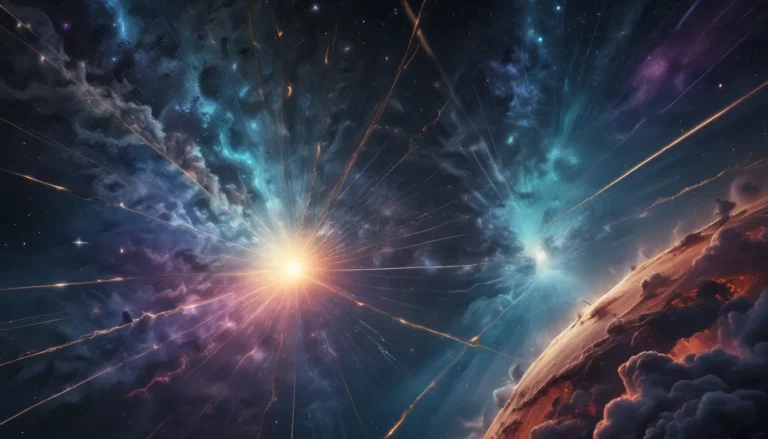The pictures we use in our articles might not show exactly what the words say. We choose these pictures to make you interested in reading more. The pictures work together with the words but don’t take their place. The words still tell you the important facts.
Dark matter, the enigmatic substance that dominates the universe, continues to intrigue scientists and enthusiasts across the globe. While its true nature remains a mystery, researchers have made significant progress in unraveling its properties and potential impacts. One fascinating aspect of dark matter is its ability to annihilate, producing clues that could unlock its secrets and shed light on the cosmos.
In this comprehensive guide, we will delve into the captivating realm of dark matter annihilation and explore ten intriguing facts surrounding this phenomenon. From its pivotal role in shaping galaxies to its implications for our understanding of the universe, we will uncover the latest discoveries and advancements in this evolving field.
Join us on a cosmic journey as we uncover the mysteries of dark matter annihilation and its profound significance in unraveling the secrets of the universe. Get ready to be amazed by the wonders that lie within this invisible cosmic puzzle.
Key Takeaways:
- Dark matter constitutes 85% of the universe, influencing the formation of galaxies and cosmic structures. Scientists utilize gamma ray signatures and indirect detection methods in the quest to uncover its existence.
- Dark matter annihilation generates energy in the form of particles, impacting galaxy evolution and unlocking cosmic mysteries. Exploring its characteristics ties into particle physics and broadens our comprehension of the universe.
Dark Matter: The Cosmic Enigma
Dark matter, a hypothesized form of matter that interacts minimally with light or other electromagnetic radiation, remains invisible through traditional detection approaches. Its presence is inferred from its gravitational effects on visible matter.
The Dominance of Dark Matter
Comprising approximately 85% of the universe's mass, dark matter overshadows ordinary matter, including stars, galaxies, and planets, underscoring its pivotal role in cosmic dynamics.
The Annihilation Process
Dark matter annihilation occurs when two dark matter particles collide and mutually annihilate, resulting in the release of energy in the form of diverse particles, such as photons, neutrinos, and antiparticles.
A Radiant Signature
In certain instances, dark matter annihilation produces high-energy gamma rays, which scientists actively seek as potential indicators of dark matter's presence and characteristics.
The Search for Gamma Ray Sources
Observatories like the Fermi Gamma-ray Space Telescope play a critical role in identifying potential sources of gamma rays associated with dark matter annihilation, unveiling regions of concentrated dark matter.
Dark Matter and the Universe’s Structure
The spatial distribution of dark matter significantly influences the formation and evolution of large-scale structures in the universe, playing a key role in shaping the cosmic web and driving the development of galaxies, galactic clusters, and superclusters.
The Connection to Particle Physics
Unveiling the mysteries of dark matter necessitates delving into particle physics. Numerous theoretical frameworks posit particles like Weakly Interacting Massive Particles (WIMPs) as potential dark matter constituents.
Dark Matter’s Role in Galaxy Formation
Dark matter annihilation may impact the evolutionary trajectories of galaxies by influencing gas dynamics, star formation rates, and overall galactic stability through the energy liberated during the process.
Indirect Detection Methods
Scientists utilize a variety of indirect techniques, such as observing cosmic rays and analyzing the cosmic microwave background radiation, to identify signatures of dark matter annihilation and illuminate its properties.
Dark Matter Annihilation and Unsolved Mysteries
By exploring dark matter annihilation, we not only deepen our comprehension of the universe but also edge closer to resolving profound cosmological enigmas, including the nature of dark matter and its implications in the cosmic mosaic.
These ten captivating facts about dark matter annihilation highlight ongoing research, groundbreaking discoveries, and unanswered queries surrounding this enigmatic facet of our universe. As scientists continue to push boundaries and unlock the mysteries concealed in the cosmos, we are poised to unearth even more enthralling insights into the enigma of dark matter annihilation.
Conclusion
Dark matter annihilation stands as a riveting subject that entralls scientists and aficionados alike. Through relentless research efforts and keen observations, we have gleaned valuable insights into this enigmatic form of matter. From its role in sculpting the cosmos to its potential impacts on our comprehension of physics, there remains a wealth of knowledge yet to be unraveled. As we press further into the depths of space and refine our detection methodologies, we are poised to unravel even more fascinating facts about dark matter annihilation. The future holds immense promise in unravelling the mysteries of dark matter and illuminating the fundamental mechanisms of our vast Universe.
FAQs
- What is dark matter annihilation?
-
Dark matter annihilation refers to the process where two dark matter particles collide, annihilate each other, and release energy, leading to the creation of new particles.
-
How does dark matter annihilation occur?
-
Dark matter annihilation ensues when two dark matter particles interact, converting their mass into various particles, including photons, neutrinos, or other exotic particles, contingent on dark matter's specific properties.
-
Can we directly observe dark matter annihilation?
-
Presently, direct observation of dark matter annihilation remains unattainable due to dark matter's feeble interaction with light and electromagnetic radiation. However, scientists probe its effects on visible matter and seek indirect proofs of its existence through diverse detection techniques.
-
What role does dark matter annihilation play in the universe?
-
Dark matter annihilation plays a crucial function in shaping and evolving structures in the universe, providing the necessary gravitational force for the formation of galaxies, galactic clusters, and other vast structures.
-
How does dark matter annihilation relate to particle physics?
-
Exploring dark matter annihilation offers insights into the fundamental properties of dark matter particles, contributing to our understanding of particle physics and augmenting theories and models elucidating dark matter's nature.
-
Could dark matter annihilation be detected in the future?
-
Scientists actively develop sophisticated experiments and technologies to potentially capture signs of dark matter annihilation and deepen our understanding of this enigmatic cosmic phenomenon, holding the promise of future detections.
-
Are there any repercussions or implications of dark matter annihilation?
-
Dark matter annihilation could affect the energy equilibrium in the universe and matter distribution. It might also contribute to the generation of high-energy cosmic rays and influence galaxy evolution and cosmic structure.
-
What ongoing research efforts exist in dark matter annihilation?
-
Scientists conduct diverse experiments to search for dark matter particles in underground labs and analyze data from space telescopes to pinpoint potential signs of dark matter annihilation, driving ongoing advancements in the field.
-
Can dark matter annihilation aid in understanding the universe's origins?
-
Studying dark matter annihilation proves invaluable in unveiling the mysteries surrounding the universe's origins and evolution. By comprehending dark matter's role in shaping the cosmos, we obtain insights into the fundamental processes that birthed our universe.
-
How does dark matter annihilation differ from dark matter decay?
- Dark matter annihilation involves the collision and mutual annihilation of two dark matter particles, whereas dark matter decay encompasses the independent decay of a single dark matter particle into different particles, both processes of great interest in dark matter research.
Dark matter annihilation presents an engrossing avenue for scientists to explore, offering tantalizing glimpses into the universe's hidden mechanisms. The pursuit of gamma ray signatures to detect this elusive phenomenon could revolutionize our understanding of cosmic structures. As research progresses, fresh insights emerge, shedding light on particle physics and galaxy formation. To those eager to delve deeper, the enthralling facts surrounding dark matter annihilation beckon, promising to unveil further secrets of this cosmic conundrum.
Was this information helpful? As we strive to deliver trustworthy and compelling content, your feedback is invaluable in our quest for knowledge and discovery. Each fact on our platform is generously contributed by users like you, enriching our repository with diverse insights and information. Rest assured, our dedicated editors meticulously review each submission to uphold the highest standards of accuracy and authenticity. Trust in our dedication to excellence and authenticity as you embark on a journey of exploration and learning with us.





